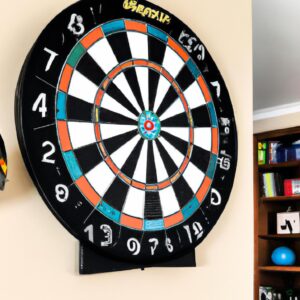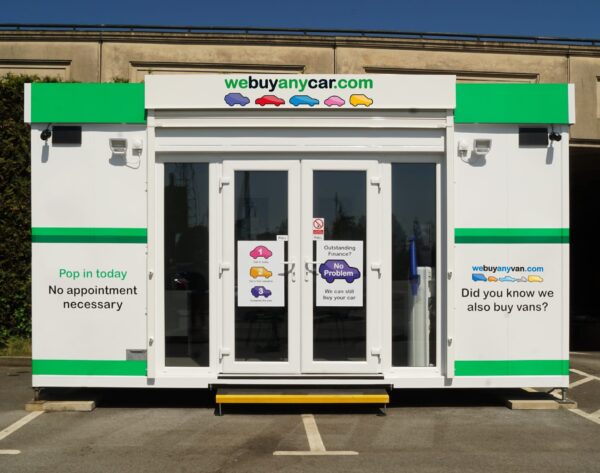Decide Smart Home Domination: Amazon Alexa vs Google Assistant

Introduction: Amazon Alexa and Google Assistant
Today, a range of home assistant technology is available on the market, with the two most popular being Amazon Alexa and Google Assistant. Both provide users with the ability to manage their daily tasks, from checking the news and weather, setting reminders or alarms, streaming music, making phone calls and much more.
These two tools differ in how they are used, the types of tasks they can accomplish, the compatible devices, as well as their user experiences. In this guide, we will take an in-depth look at Amazon Alexa and Google Assistant, comparing their features, capabilities, advantages, and use cases.
Overview of Amazon Alexa
Amazon Alexa is an intelligent personal assistant developed by Amazon. It is designed to control your smart home devices and provide you with a wide range of services using voice commands. Alexa is compatible with a vast range of products and can easily be integrated into many existing home automation systems. With Alexa, you can easily set alarms, order products online, play music, ask questions, get the latest news and weather updates, and much more.
Alexa is always listening so it can detect voice commands from any room in the house, even if there is background noise. To activate Alexa, you need to say the ‘wake word’ such as ‘Alexa’ or ‘computer’. Once it is activated, Alexa will access your request and take the appropriate action.
The Alexa app is available on all major mobile devices and can be used to set up and manage Alexa-enabled devices. It also helps you discover new features, customize settings, and access third-party skills. Moreover, it can process natural language queries, so you don’t have to use specific phrases.
In the world of smart home assistants, Amazon Alexa stands out due to its wide variety of features, reliable performance, and ease of use. It allows users to connect to a range of digital services and control their home environment with just their voice. This makes the whole experience of using Alexa more intuitive and enjoyable.
Overview of Google Assistant
Google Assistant is available for use on both Android and iOS devices, allowing users to access a range of features and services. It provides accurate voice recognition with natural language processing and can understand commands in multiple languages. Additionally, Google Assistant is compatible with a large number of third-party apps, enabling users to perform tasks such as playing music, ordering food, and controlling connected devices such as smart lights, thermostats, and vacuums.
One of the main advantages of Google Home is the integration with Google’s search engine and other data sources, giving it access to massive amounts of information that help provide accurate results when answering questions.
Google Assistant also provides personalized recommendations based on user’s voice search history, making it easier to find content related to what you’ve previously searched for. It can also recognize multiple users, allowing each person to get tailored results based on their individual preferences.
The Google Assistant also features ‘Routines’ which are pre-set tasks that can be triggered with voice commands. You can set up custom routines, such as ‘good morning’ or ‘bed time’ to trigger activities like turning on lights, playing specific music or podcasts, providing a news briefing and more. This helps you stay organized and make your daily tasks more efficient.
Google Assistant also allows you to control compatible devices through the use of voice commands. For example, you can control your connected lighting, thermostat, garage door, and security cameras with just your voice. You can also connect with compatible smart home devices from other manufacturers in the Google Home app.
Overall, Google Assistant proves to be a great tool for helping users get things done quickly and easily. With its accurate voice recognition, natural language processing, and access to a wide range of information, it is definitely a great choice for those who want a reliable home assistant.
Comparing Amazon Alexa and Google Assistant
When it comes to deciding between Amazon Alexa and Google Assistant, there are some key differences that should be considered. To help you decide which of the two is best for you, we’ll take a look at their features, capabilities, and user experiences.
First up, let’s consider the features and capabilities of Amazon Alexa and Google Assistant. Both offer voice commands and can be used to control smart home devices. However, Amazon Alexa offers a more comprehensive range of skills than Google Assistant, allowing users to access third-party services such as Spotify and Uber. Google Assistant, on the other hand, has Google Cast built-in, making it easier to stream music and video from a number of sources.
In terms of user experience, Amazon Alexa is considered the more user-friendly of the two. It has an intuitive interface and the Echo device range offers a selection of options to choose from. Google Assistant is slightly less user-friendly and requires a bit more knowledge to get it set up compared to Amazon Alexa.
In addition, it’s worth considering the integrations that both assistants offer. Amazon Alexa works with a wide range of devices and services, including Philips Hue and IFTTT, while Google Assistant has more limited integration options, but is more popular in countries such as the United States.
Finally, when it comes to security and privacy, Amazon Alexa and Google Assistant both use encryption to protect user data. However, Amazon has taken extra steps to ensure user data is always secure. For example, they offer two-factor authentication and an optional setting to have Alexa delete audio recordings of your voice after a certain period of time.
Exploring Other Use Cases for Amazon Alexa and Google Assistant
Beyond their basic functions, Amazon Alexa and Google Assistant can also be used in a variety of other ways. They can be integrated with home automation devices such as smart lights, thermostats, and vacuums, allowing you to control them with just your voice. They can also be used to help you keep track of events and tasks. For example, you can set reminders, make shopping lists, and add items to your calendar. Additionally, Alexa and Google Assistant can provide you with information like the latest news updates, weather forecasts, traffic conditions, and more.
Both technologies also have capabilities for entertainment. You can stream music from services such as Spotify or Pandora, listen to audio books, play games, search on the web, and much more. Amazon Alexa and Google Assistant can even be used to control other devices in your home such as televisions and game consoles. The possibilities are practically endless!
In addition to their in-home uses, Amazon Alexa and Google Assistant are also being used in businesses and on-the-go. Companies are using voice assistants in their offices and factories, while consumers are using them in their cars, at airports, and more. As technology continues to advance, the number of use cases for Amazon Alexa and Google Assistant will only continue to expand!
Smart Home Automation with Amazon Alexa and Google Assistant
Smart home automation has become increasingly popular over the last few years as it simplifies our daily lives and brings convenience. With two of the most popular home assistants, Amazon Alexa and Google Assistant, it is now possible to automate numerous tasks in the home with just voice commands.
Amazon Alexa and Google Assistant are both able to integrate with a wide range of smart home devices. Smart lights can be switched on and off with either assistant, while thermostats can be adjusted or automated to your desired temperature. You can also set-up and control your robot vacuum cleaners and even security systems with the voice assistants.
Both Amazon Alexa and Google Assistant support the majority of home automation devices, although there may be small differences in compatibility depending on the device. It is worth doing some research to ensure that the devices you want to use will work with either assistant.
The setup and configuration of these devices differs between Amazon Alexa and Google Assistant. To configure a compatible device with Amazon Alexa, it is necessary to add it to the Amazon Alexa app first. With Google Assistant, you can simply link the device to your Google account and it will be ready to use. The setup process for each device may differ, so make sure to check the instructions accordingly.
Once the device is configured, it can be controlled with voice commands. Simply say “Alexa/Hey Google” followed by the command and the device will respond accordingly. For instance, you could say “Hey Google, turn on the living room lights” or “Alexa, set the bedroom temperature to 70°F”.
Amazon Alexa and Google Assistant provide an easy way to simplify our daily tasks with smart home automation. Whether you want to automate your lights, adjust the temperature, or clean your floors, you can do it all with voice commands.
Security and Privacy
When it comes to the security and privacy of your personal data and information, Amazon Alexa and Google Assistant are just as safe, if not even safer than other voice assistants such as Apple’s Siri. Both services employ stringent measures to ensure that user data is kept secure and private.
Amazon employs sophisticated encryption technology to protect its users from potential hackers and malicious attacks. It also regularly conducts security audits on its server and data centers. Google uses its own advanced security measures to protect its users’ data and also requires multiple levels of authentication before allowing access to user accounts.
Both Amazon and Google offer users the option to delete recorded data and recordings of conversations with their assistants. Amazon also allows users to opt out of data collection entirely, while Google allows users to review and delete their personal data at any time. Furthermore, both companies are actively working towards increasing the security of their respective products and developing measures to minimize the risk of data breaches.
When it comes to privacy, Amazon and Google have different approaches. Amazon is more upfront with its data collection practices, letting users know exactly what’s being collected and for what purpose. Google, on the other hand, is more opaque about its data collection, but it does offer users a variety of privacy settings. Ultimately, it’s up to users to decide how much of their data they’re comfortable sharing.
Conclusions
The Amazon Alexa and the Google Assistant are both impressive pieces of technology in their own right, offering different features, capabilities, user experiences, and even integrations into home automation systems. Amazon Alexa’s focus on voice recognition and its ability to interact with third-party skills gives it an edge when it comes to providing a more unique experience. Google Assistant is excellent at integrating with other Google services and provides advanced features such as real-time translations that set it apart from its competitors.
When deciding which home assistant to choose, it’s important to consider what your specific needs are. Consider how you plan to use the device, what features are important to you, and which operating system you prefer. Both Amazon Alexa and Google Assistant offer great experiences and are sure to make your life easier in some way, shape, or form.
At the end of the day, only you can decide which home assistant is right for you. We hope this guide has helped you in making this decision by providing an overview of both technologies as well as a comparison of their features, user experience, and integrations. Thank you for taking the time to read it!
Related Resources
The internet is chock full of useful information when it comes to Home Assistants. Here are some resources that may help you in your journey with Amazon Alexa and Google Assistant:
- Amazon Alexa Official Website – http://www.amazon.com/echo
- Google Assistant Official Website – www.google.com/assistant
- Guide to Home Automation – www.homeautomationguide.co
- Smart Home Devices Comparison Chart – www.smarthomechart.com
- Security and Privacy Issues Guide – www.securityprivacyissues.org
These resources can be a great starting point for understanding both technologies better and making a more informed decision about which Home Assistant is the right fit for you.
Q&A: Common Questions about Home Assistants
Home Assistants are becoming increasingly popular due to their ease of use and ability to automate tasks. With so many available options on the market, it can be difficult to decide which is the best choice. Here are some of the most commonly asked questions about home assistants.
- What is the difference between Amazon Alexa and Google Assistant?
- Which home assistant has the best voice recognition?
- What kind of third-party integrations are available with each home assistant?
- How secure is each home assistant in terms of data privacy?
- Is there a way to control multiple home assistants from one device?
- Does each home assistant have a mobile app for remote control?
There are many more questions you may have related to home assistants. The best way to learn more is to research and read reviews online. Additionally, you may want to speak to an expert or ask friends who already have a home assistant for advice!
At the end of this guide, we would like to encourage our readers to leave their feedback or ask questions in the comments section. We value your opinion and would love to know what you think of home assistants. So please don’t be shy and share your insights. We look forward to hearing from you!
As we draw to the end of our ‘Home Assistant Showdown: Amazon Alexa vs. Google Assistant’ article, it is important to keep in mind the key differences between the two technologies. Amazon Alexa and Google Assistant are both incredibly powerful home assistants that can help you with everyday tasks. While they have many features and capabilities in common, there are also certain areas where one is better than the other.
For example, Amazon Alexa will allow you to access a bigger selection of third-party skills whereas Google Assistant has better integration with other devices and services. Security and privacy are an important consideration when using any of these technologies, so make sure you are aware of how your data is collected and used before making a purchase.
Finally, thank you for taking the time to read our article. We hope you have a better understanding of Amazon Alexa and Google Assistant, and that you are now able to make an informed decision about which one is best for you and your home.
comments: 0






